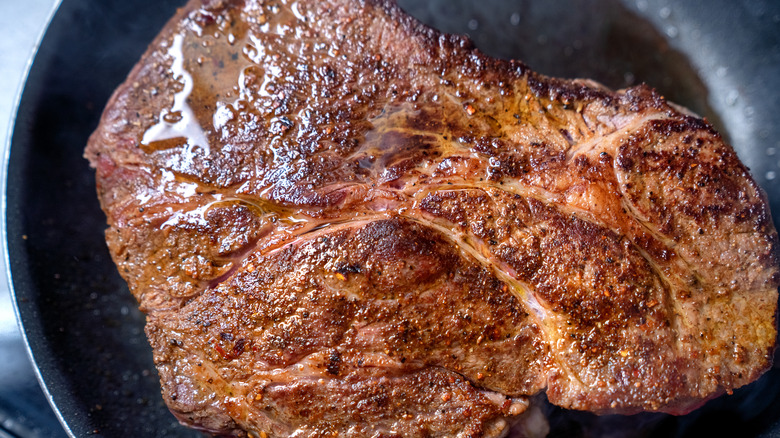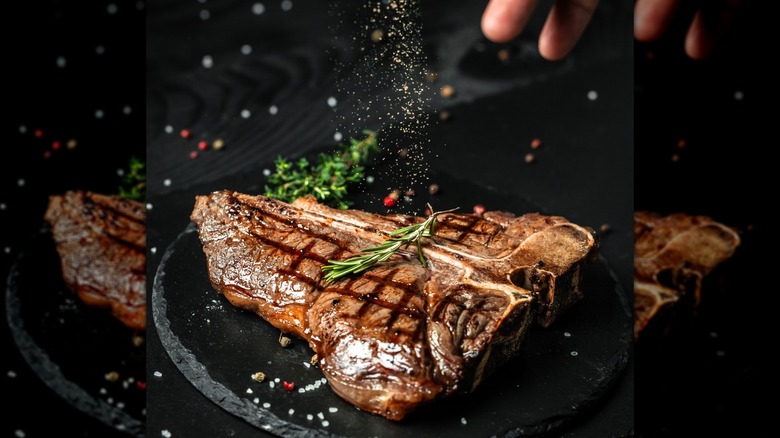Salt The Skillet Instead Of Your Steak For Crispy Results
For ages, we've been told the same basic recipe for achieving delicious steak at home: Season your preferred cut of beef with salt and pepper at least one hour in advance of cooking, put it in the pan with a dash of oil, and don't so much as touch it for at least two minutes to get the classic charred, crispy sear on each side. However, you can skip the fussy seasoning and marinading process by seasoning your pan directly and enjoy a much faster cooking process by flipping the steak frequently.
As every dish needs seasoning, you still need to salt your meat, but you can do so indirectly. Seasoning the pan creates a smoking hot barrier between the steak and the pan's surface, so when your steak makes contact, it gets singed by the heated salt. The salt in the skillet simultaneously seasons your cut of beef and helps build a solid sear and crust.
Many suggest using a well-seasoned cast iron skillet for cooking steak to achieve the best results because it offers unparalleled heating and searing abilities and won't let your steak get welded to the pan. However, a stainless steel, enamel-coated, or other heavy pan can also work nicely. You can use any pan you typically would cook a steak in as long as you understand its heat conductivity, but leave lightweight nonstick pans out; they won't get as hot as this tip requires.
How to properly season a skillet with salt
When seasoning the pan directly, sprinkle a generous layer of salt — around 1-2 tablespoons — onto the surface. We recommend using coarse kosher salt because it has sturdy crystals that form a nice crust instead of dissolving in the pan. However, you can use almost any type of salt you prefer. If you're all about freshly ground sea salt or Himalayan pink salt and most familiar with their salt levels, opt for those — but skip the table salt, as it contains iodine and can leave your steak with an unappealing metallic flavor.
To approach this hack correctly, allow your skillet to get hot — and we mean extremely hot. Ideally, you want to see smoke coming off the surface before putting your steak in. Place the steak in the pan and gently push it around your pan to collect the salt. Flip your steak frequently — about every 30 seconds for four to five minutes – until it is perfectly salted and seared on both sides. Frequent flipping ensures even cooking and distribution of the juices lurking behind its crispy, seasoned crust.
If you want to add other seasonings to your steak, such as pepper or ground spices, add them to the steak as it cooks rather than before, as they are prone to burn when subjected to high temperatures. After you have achieved an initial sear, add any extra seasonings to finish your steak.

